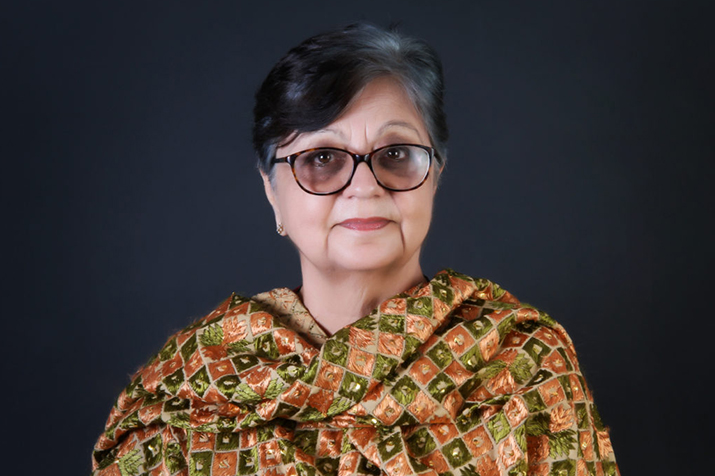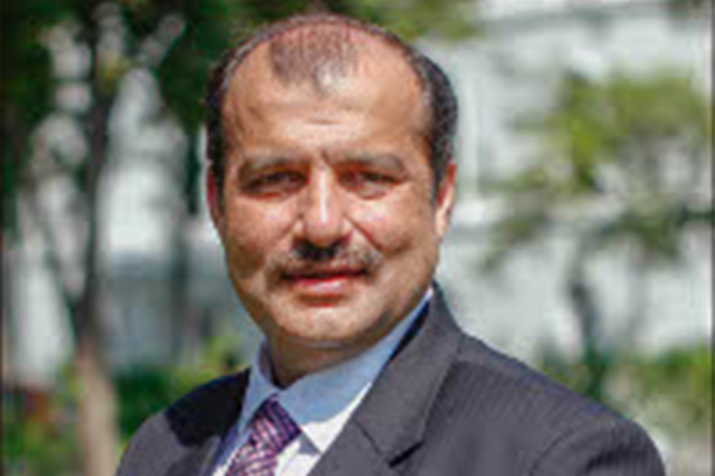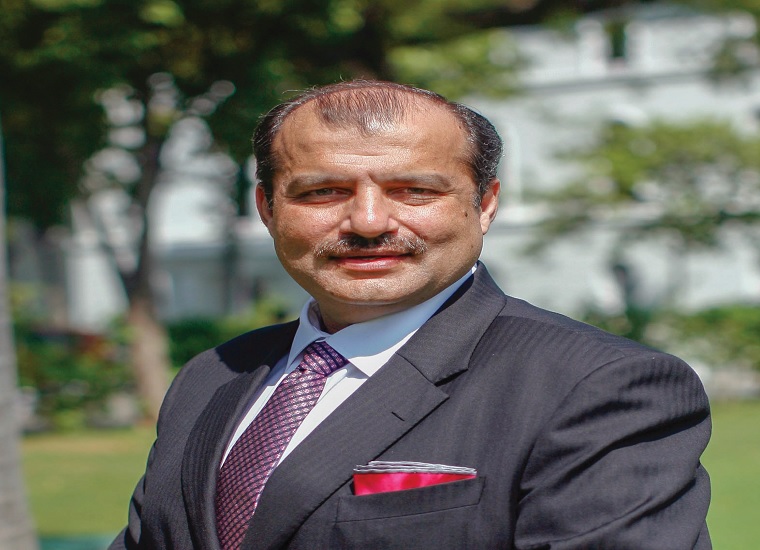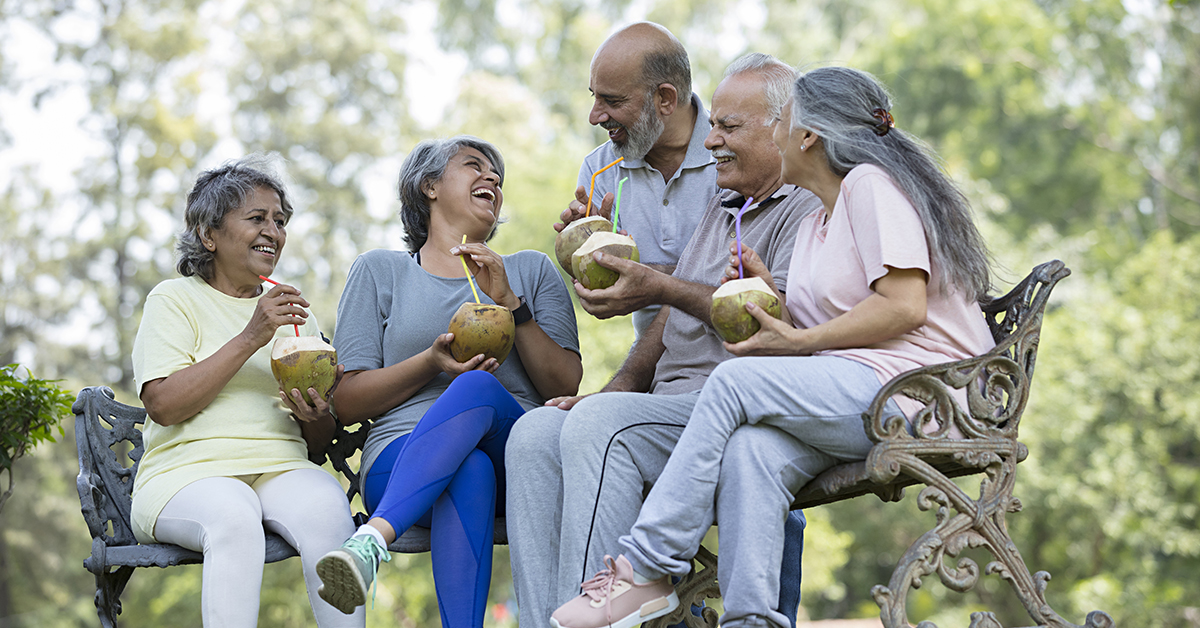Last year, around the time the lockdown was lifted across the country, an advertisement appeared on our TV sets. It begins with an elderly lady waiting for her family at a restaurant, presumably meeting them for the first time since the lockdown. And within seconds, they materialise: a young couple, a millennial sister of the husband, and an army of children, each one of them representing some of the medium’s favourite demographics. A commercial like this can go anywhere, making a lead of any of the cast of just-materialised characters to sell whatever product it wants. It does not pick them and sticks with the original elderly lady as her voiceover reflects on the difficult months that had gone by. (Perhaps more unusually, this reflection involves no banking or insurance product for the retired; this, after all, being a toothpaste ad for Colgate.) As her voiceover narrates the loneliness she experienced during the pandemic, an elderly man appears at the table, puts an arm around her, and as her baffled children look on, she raises her engagement ring by way of explanation. ‘Celebrate a new kind of freedom,’ the ad says. ‘Get started with a new smile.’ This wasn’t the only ad to feature a silver-haired protagonist. A spate of commercials released during the pandemic, and featuring some of the country’s biggest brands, has chosen to focus on this particular demography. Be that a group of old men, their masks on their chins, choosing to buy an ornament for their young caregiver (Tanishq); or an old woman chatting with her nurse over a messaging app during the lockdown (WhatsApp); or a nervous professor logging in for his first Zoom lesson (Vi)—each one of these representing an activity we rarely see seniors perform on a television commercial, from using a new technology to buying something expensive. At one level, this is understandable. The pandemic has affected the elderly more than any other group. And ad filmmakers would want to reflect such concerns. But at another level, this is entirely new. Although there have been occasional ads in recent times that have cast older people as protagonists, the advertising landscape for the longest period has refrained from featuring wrinkled faces unless to parrot an insurance ad or play cute in the background. The conventional wisdom being that India is a country of young consumers; the old, if they participate in the economy, do so in only limited ways. But the pandemic is making advertisers and businesses have a fresh look at this largely ignored demography. This trend has begun to pick up more steam in several foreign countries, with many of the top consumer goods launching new products just for the elderly or developing new verticals to target them. Several companies—from Nestlé, the Activia yogurt maker Danone SA, Colgate-Palmolive to IKEA—are doing so, according to a Wall Street Journal article. Nestlé in China has come out with a powdered milk drink that it claims enhances mobility during ageing; Colgate launched anti-ageing products, such as an amino acid toothpaste in China which it claims can reverse visible signs of gum-ageing; IKEA, elsewhere, has come out with furniture pieces for the elderly; Procter & Gamble has launched a razor intended for caregivers of those with ageing-related needs in Canada; and Danone has set up a new healthy-ageing unit and launched a whey protein product that claims to aid muscles, joints and bones. “We clearly see healthy ageing, even more now in the Covid world, as a huge trend,” Danone’s CEO Emmanuel Faber told the Wall Street Journal. In India, several startups and businesses have sprung up to target this segment. There are e-commerce sites for senior citizens, plush real estate projects for the old, apps that help them navigate the internet, specially designed products such as phones and music players, and several more. One such product is the hugely successful music player Carvaan (brought out by Saregama, which is owned by OPEN magazine’s parent company, the RP-Sanjiv Goenka Group). To a millennial who listens to music through music-streaming apps such as Spotify or downloads them to his music player, the appeal of the product may seem baffling. But to the elderly segment, with its ease of design, harking back to an older time, and the thousands of tunes pre-loaded on it, much of these of an older vintage, the product has been immensely attractive. Many of these businesses and products for the elderly had come up long before Covid arrived on Indian shores. But the pandemic, the founders say, has increased demand and expanded the scales of their businesses. Covid has brought with it insecurity and fear among the old, but it is also pushing them online and increasing their appetite for products and services for their wellness and comfort. MP Deepu, who along with Rahul Gupta, co-founded the Gurugram-based Senior World, a platform that comes out with products and travel services for the elderly, noticed an opportunity for such a business when he saw the struggle many of his elderly relatives went through. “If you just look around, you will notice that while so many things have emerged that make our lives so convenient, there’s been very little for the elderly,” he says. One of his company’s first forays has been in technology. They have come out with several iterations of a mobile phone for the elderly. Called Easyfone, this phone comes with features many large mobile phone-makers rarely consider for older users, from its large font sizes, well-spaced keypads, to the ability to amplify sounds and, in one version, even compatibility with those who use hearing aids. It even allows others, presumably a son or daughter, to set alarms and reminders and configure the phone remotely. According to Deepu, about two lakh individuals currently use the phone, and the company is now developing a smartphone version of it. Senior World also has a travel vertical where they organise domestic and international trips only for the elderly. “We don’t allow younger people to join, even those who want to accompany their older relatives. People don’t understand, older people want to do their own thing,” Deepu says. Trips with Senior World are organised differently, he says. The itineraries are more easy-paced, the hotels booked are elderly-friendly, buses play old music and carry ice boxes for items like insulin, and the tour guides who accompany the elderly are carefully selected. “There has been a lot of change among the elderly compared to the past. They are so full of life, they have their own lists, places they want to go to, things they want to do. They want to engage with the world on their own terms,” he says. The demography of senior citizens in India is rapidly changing. They are living longer and more fulfilling lives, many continue to work long past their retirement age and, just like their younger countrymen, have disposable income, which they are willing to spend on their comforts and wants. India might have an attractive market featuring one of the world’s largest youth bases. But, as businesses have begun to realise, at least 6 per cent of this population is 65 years old and above. They are living longer—from a life expectancy at birth of 47 years in 1969, 60 years in 1994 to 69 years in 2019, according to the State of World Population 2019 report by the United Nations Population Fund (UNFPA)—and the share of those aged 60 and above is expected to rise to nearly 20 per cent by 2050. And the market catering to such a population is also exceptionally under-served. Tapan Mishra, the founder of the startup Seniority, which runs an e-commerce site and a few offline stores for the elderly, points to a Confederation of Indian Industry (CII) report that claims the medical and lifestyle market for the economically independent senior urban population stands at about Rs 43,000 crore. “The overall potential of the market driven by senior citizens is as large as Rs 1 lakh crore, excluding the real estate, BFSI [banking and financial services industry] and pharma products categories. Of this, only 10 per cent has been addressed so far, which implies that there is a tremendous scope for the elder care industry to grow and thrive,” he says. Mishra also believes there are prominent psychographic shifts that are going on in this segment. “Seniors are becoming more independent and conscious of their health and well-being. Today, they not only have greater disposable incomes, but also more willingness and savviness to spend on themselves, engage in hobbies, travel the world, and even fulfil their dreams,” he says. When the startup was first being conceived, Mishra claims they thought the business would have to work as an omnichannel platform, where there would be retail outlets and an online store. “However, we quickly realised that contrary to popular belief, seniors were quite comfortable shopping online and exploring solutions relevant for them. This gave us the confidence to convert to an online-first model,” he says. Mohit Nirula, the CEO of Columbia Pacific Communities, which develops and manages plush residential projects for senior citizens across India, also points to this change in the mindset of the old in India. “In the past there was this notion that once people retire, they set aside all their material possessions for their children. That has completely changed.” When the Sathiamurthys, a Chennai-based couple in their 50s first laid their eyes on a residential project for the elderly in Coimbatore built by the Columbia Pacific Communities group, they instantly fell in love with the place. “You can see the hills on one side, and there are trees everywhere, and you can go for long walks among them,” says Sujata Sathiamurthy. Although purchasing a home here involved a sizeable investment and they already owned a house in Chennai, the two, still in their 50s, decided to retire from their jobs (Sujata worked at ONGC and her husband worked as a financial consultant in Chennai), purchase a villa here and begin living in it. “We thought we should move [to a retirement home] at a time when we can still care for ourselves,” she says. When the pandemic broke out, they weren’t particularly perturbed, she says, but a sense of dread began when the newspapers stopped being delivered. The Sathiamurthys spent most of their time before the pandemic in an after-hours school for the underprivileged nearby. With that shut, they turned to an online course to learn Sanskrit. “We had also been planning to do a trip to the Northeast [of India], with some of our friends joining us there. But then the lockdown happened. We are waiting for this [the pandemic] to end so that we can go for that trip,” she says. PP Kanthan, an 87-year-old former bureaucrat based in Bengaluru, began to look for a new home for himself and his wife Rajalakshmi a few years ago because the neighbourhood around his then house had become crowded. Several buildings and roads had come up nearby, pollution levels had gone up and traffic snarls were so frequent that it had become impossible to live there. The two, whose children live abroad, moved to a township built for the elderly (by the Columbia Pacific Communities group) on the outskirts of the city. “It was a wise decision,” Kanthan says. All their needs—from food to laundry—are taken care of, and they have built friendships with many other residents over long walks and the various games and activities in the club. Just a few weeks ago, his wife won a Scrabble tournament at the club. “These activities like the arts, dance or music are quite essential because they say things like depression and Alzheimer’s are kept at bay,” he says. “Besides, it makes life worthwhile.” Several real estate companies have begun to target this demography by building and managing homes for the elderly. These homes are designed in such a way as to be more elderly-friendly—from homes with large passageways that allow for wheelchair access and grab bars in bathrooms, to a concierge service, tie-ups with hospitals, a ready ambulance, along with large clubhouses for activities and games. Although the ownership of the house passes on to the next of kin because of the high costs of living in such an assisted place, most youths look to rent the place out to other seniors or to sell it. Nirula, the CEO of Columbia Pacific Communities, says that when the Seattle-based group first came to India two decades ago, it decided to invest in only the Columbia Asia chain of hospitals and not their senior homes, because it felt the market was not ready for such a concept. “But while culturally not much has changed, circumstances have changed drastically,” he says. “Old people stay alone now. It’s not because their children have fought with them. It’s because their children work in other cities or countries. In fact, they are happy for their children,” Nirula says. According to Nirula, the old idea of retirement homes being dismal places filled with bitter geriatrics has also transformed. “Seniors are more than happy to live in a place with like-minded people,” he says. Those who build such homes claim that since the pandemic—with the difficulties the lockdown brought upon old people who need support and assistance in their homes—enquiries and bookings into such assisted-homes have risen. “I run nine communities [across five cities] and for the first time, I now have a waiting list,” he says. The group is currently developing its tenth such project in Bengaluru, and plans to develop four more in Bengaluru, Pune, Chennai and Kolkata. But even as more businesses and products get launched that target this elder demography, and many seniors are more than willing to access them, challenges remain. The most prominent being the internet. Mumbai-based Aparna Thakker, an educational technology entrepreneur, noticed an opportunity here when she saw the struggle old people go through when going online. Her startup, Empowerji, looks to bridge this gap through a learning app that helps senior citizens navigate the online world, and another app, EJI, which helps older users perform online tasks like paying bills or shopping online through a simple chat interface. “There has been this big change for us [with the arrival of the internet]. It has brought so many opportunities and things to enjoy. But the old have missed out on these completely. That’s why we see old people standing in long queues to pay their electricity bills when there’s a much simpler online process,” she says. Like much of the rest of the country, the pandemic has also pushed the elderly to go online. Mishra of Seniority claims orders from their e-commerce site has skyrocketed. “More of them had resorted to online shopping in the earlier days of the nationwide lockdown because of the constraints related to stepping out of the house. And despite the lockdown easing all over the country now, the convenience has become a habit, converting them into permanent online shoppers,” he says. Although the pandemic has brought a lot of difficulties, especially for the elderly, it has also pushed many of them to get over their fear of technology. “In the early part of the lockdown, for our workshops, it would take hours for my team members to get seniors to just download and go by each step to set up a Zoom account,” she says. “Now everyone has it.”
Continue reading “Old Money”







